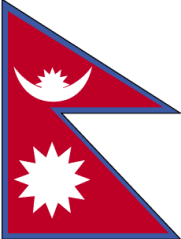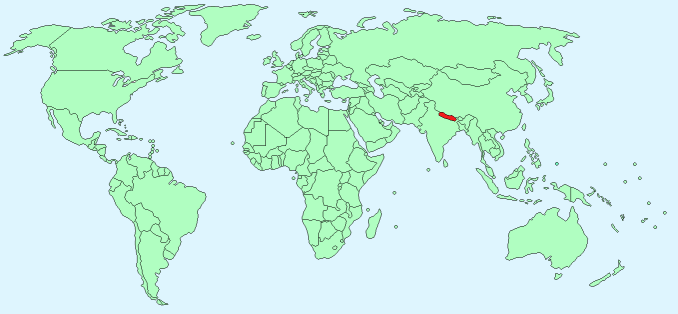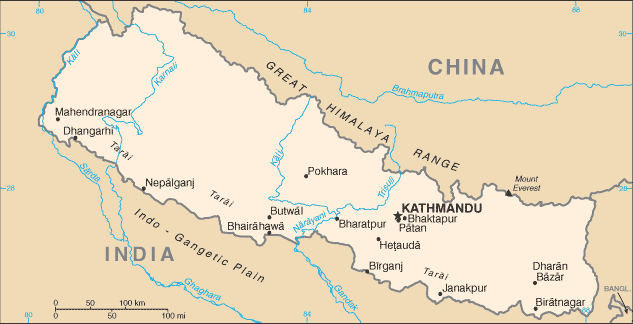Nepal


Continent – Asia
Region – Southern Asia
Size – 147,181km²
Geography – Flat in the south, central hills and mountainous north
Language – Nepali 44.6%, Maithali 11.7%, Bhojpuri 6%, Tharu 5.8%, Tamang 5.1%, Other dialects 26.8%
Religion – Hindu 81.3%, Buddhist 9.3%, Muslim 4.4%, Kirant 3.1%, Christian 1.4%, other 0.5%
Monetary Unit – Nepalese rupee
Natural Resources – quartz, water, timber, hydropower, scenic beauty, small deposits of lignite, copper, cobalt, iron ore
Agriculture – pulses, rice, corn, wheat, sugarcane, jute, root crops; milk, water buffalo meath
Industry – tourism, carpets, textiles; small rice, jute, sugar, and oilseed mills; cigarettes, cement and brick production

Neighbouring Countries – China, India
Population – 31,551,305 (2014 estimate)
Population Growth Rate – 1.79%
Average Life Expectancy – 67.52 years
Capital City – Kathmandu (1,142,000)
Highest Mountain – Everest (8,850m)
Longest River – Karnali (507 km)
Climate – South – warm winters 7°C to 20°C and hot summers 25°C to 37°C North – cold winters – -12°C to 2°C, warm summers 20°C to 35°C
Yearly Rainfall – 160cm mainly June to September
Plant Life – Oaks, chir, pine Maple, fir, Blue pine, hemlock, spruce, juniper, yew, holly, birch, rhododendron, alpine plants, orchids
Animal Life – wild dog, red panda, tiger, hyena, jackal, rhesus monkey, cats, squirrel, hare, deer, goats, marmots
Bird Life – green finch, dove, woodpecker, nuthatch, warbler, flycatcher, bulbul, hill partridge, pheasant, yellow-backed sunbird, minivet, edstart, pipit, wagtail, snow pigeon, snowcock, and golden eagle
Harvard Reference for this page:
Heather Y Wheeler. (2015). Nepal. Available: https://www.naturalhistoryonthenet.com/Facts_Figures/Country_Facts/nepal.htm. Last accessed Tuesday, July 19, 2016
Facts and Figures Pages
